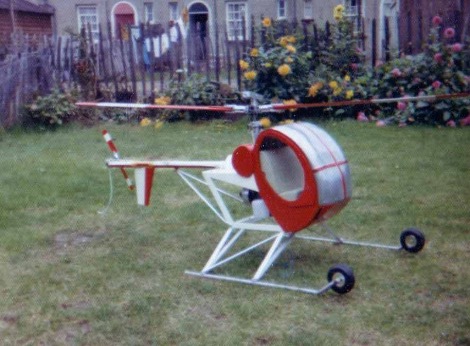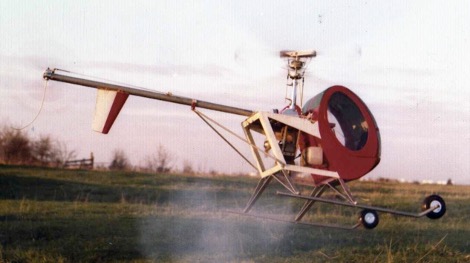

For my first attempt at building a RC helicopter, I chose to model a Hughes 300, which seemed pretty straightforward as it didn’t have much of a fuselage. What it did have I made from fibreglass. To power the rotor blades I used a Merco 61 engine with two glo-plugs but as this was designed for use at the front of an airplane where there is plenty of air passing over the cylinder to keep it cool, I had to incorporate a fan in the design of the mechanics.
I used a clutch from a lawnmower driven by a chain from the engine and built a gearbox by bolting together two slabs of metal which enclosed the gears. The gears themselves came from various scrap metal yards and from the parts supplier Moffats. At that time I didn’t have any moulding capabilities so the gears where meshed together by carefully filing the sides of the gearbox as well as the gears themselves until they fitted.
The tail drive was ordinary piano wire which given its shape (oval and not round) caused all sorts of vibration problems. The main rotor blades were made from hardwood leading edge and a balsa trailing edge. This was sand-sealed and covered in Fablon – a popular self- adhesive covering for use on kitchen work surfaces. For paddles I used 5cm diameter tin cans – they looked stupid but they turned out to be highly effective.After six months the model was ready to test fly.
It was 80cm wide, 180cm long and 80cm high. It wasn’t exactly a scale model but the dimensions were in proportion to the full size model. It even had a fully collective pitch (something that very few others were trying) – purely because the full size we copied had that.